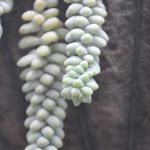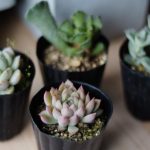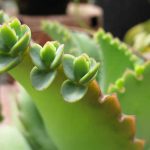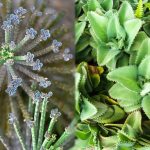Delve into the realm of Panda Plants care, ensuring those fuzzy leaves thrive and mastering the art of propagation techniques and more for Kalanchoe tomentosa.
Discover the irresistible charm of the succulent variety Kalanchoe tomentosa, fondly known as the panda plant.
Indigenous to Madagascar, these succulents flourish in warm, luminous conditions, reaching heights of several feet. Their adaptability to container growth, partial shade tolerance, and unique textured leaves make them coveted choices for indoor cultivation.

Dabble in various cultivars to broaden your collection of these fluffy plants. While ‘Chocolate Soldier’ reigns supreme, keep an eye out for ‘Gold’ or the whimsically named ‘Teddy Bear’ for a personal touch.
Embark on the journey outlined in this comprehensive manual to nurture your trove of Kalanchoe plants.
| Plant Type: Succulent | Family: Crassulaceae |
| Genus: Kalanchoe | Species: Kalanchoe tomentosa |
| Native Area: Madagascar | Exposure: Full sun to partial shade |
| Height: 2’ | Watering Requirements: Low |
| Pests & Diseases: Mealybug | Maintenance: Low |
| Soil Type: Succulent mix | Soil pH: 5.5 to 6.0 |
What Is It?
Kalanchoe tomentosa, also known as panda plants, have fuzzy gray leaves with colored edges and can be toxic to pets.
The Kalanchoe genus includes over 100 intriguing species of succulent plants with distinctive appearances, beloved for their capability to bloom in lower light conditions when grown indoors.
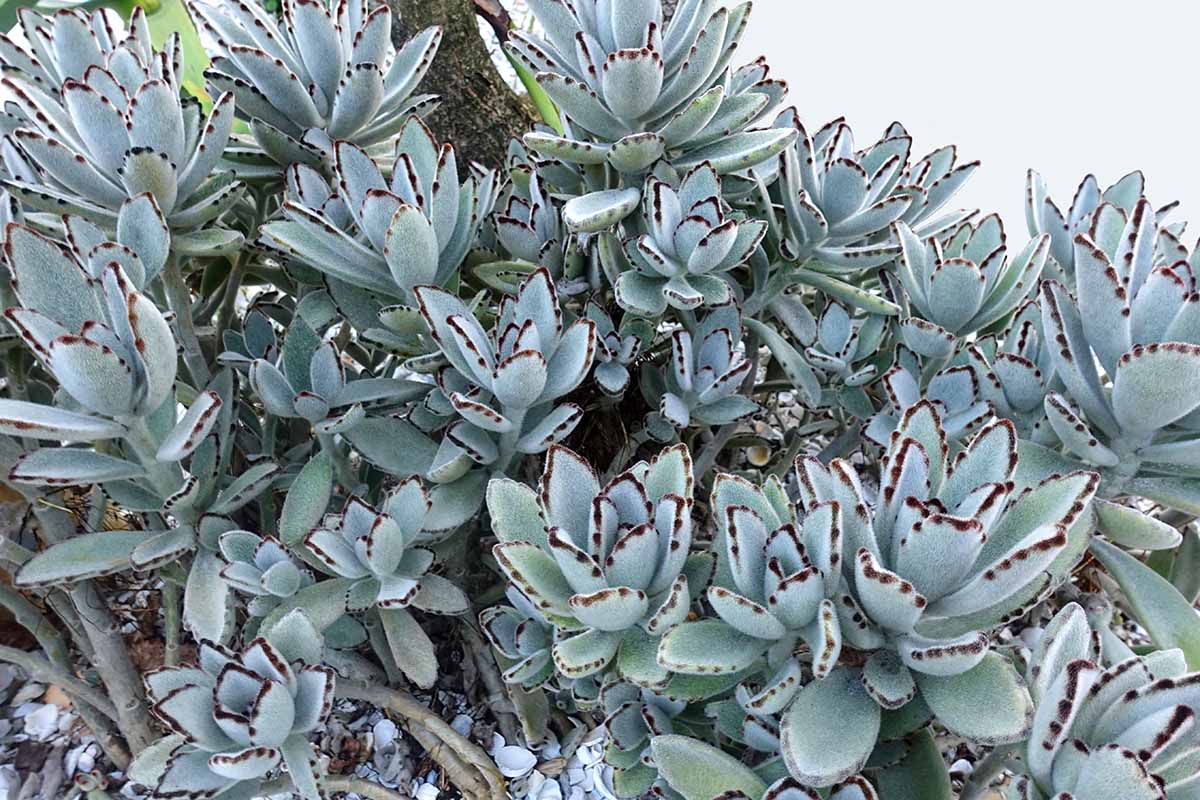
Kalanchoe blossfeldiana is a prevalent species among houseplant enthusiasts, yet another charming option is Kalanchoe tomentosa, also called panda plants due to their fuzzy gray leaves with striking colored edges in shades from chocolate brown to burgundy red.
Despite their innocent appearance, panda plants are toxic to pets. To prevent accidental ingestion, elevate the plant pots or place them in pet-free zones.
How to Grow
Panda plants, as succulents, require minimal care. They may not grow tall or rapidly indoors as they would outdoors under native conditions, but they are undemanding, making them ideal for novices. While they might not typically flower indoors, their leaves are usually the main attraction.
Light

Kalanchoe tomentosa thrives in direct sunlight, ideally positioned in front of bright south-facing windows that receive ample direct sunlight daily. In regions with harsh afternoon sunlight, provide some protection, as these plants enjoy as much light as possible but can tolerate shade better than other succulents, though growth may be slower.
If direct sunlight is limited, panda plants adapt well to areas with bright indirect light all day, although they may not flourish as vigorously as in brighter spots. An east-facing window with a few hours of morning sun is a suitable alternative.
When positioning your plants, remember to avoid placing them away from windows or in rooms solely with north-facing windows. I made the mistake myself with my Chocolate Soldier – I kept it on my dining table because it looked adorable and I wanted it to be visible. Unfortunately, insufficient light led to my plant shedding leaves rapidly.
If you notice your plant’s stem stretching and its leaves appearing lackluster, it indicates a lack of sunlight. The plant might start leaning towards the nearest light source to seek more sunlight for photosynthesis. Hence, if you observe any stretching, relocate the pot to a brighter spot or use indoor grow lights during darker periods.
Water
Watering is a critical aspect of plant care. Panda plants, native to rocky environments with low moisture, flourish with minimal watering and thrive in dry soil conditions. These drought-tolerant plants store water in their leaves to endure extended periods without rainfall in their natural habitats, making them prefer underwatering over excess moisture.
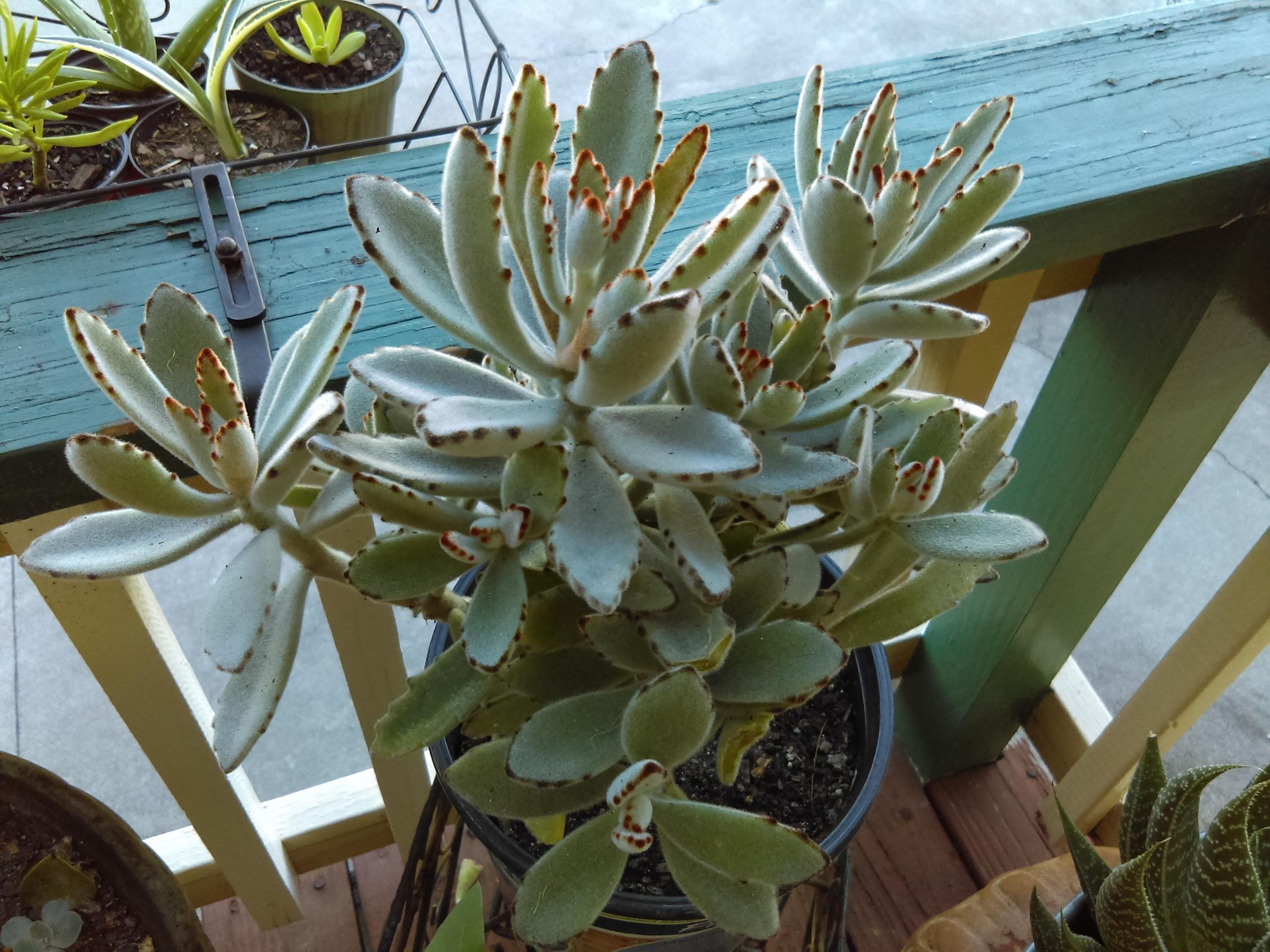
Monitoring the soil moisture before watering is advisable. Overwatering can lead to root rot, stunted growth, or plant death, as these succulents are sensitive to excess water. Therefore, it’s recommended to allow the soil to completely dry out and wait a couple of days before watering again. Adjust watering frequency based on the plant’s location, pot size, and environmental conditions.
Soil
In terms of soil requirements, Panda plants thrive in well-draining soil. Regular garden or potting soil does not provide the ideal texture for their root system. Hence, opting for a succulent potting mix rich in draining components is essential. When repotting or transferring to a new container, ensure the soil is well-draining to prevent waterlogging and promote healthy root growth.
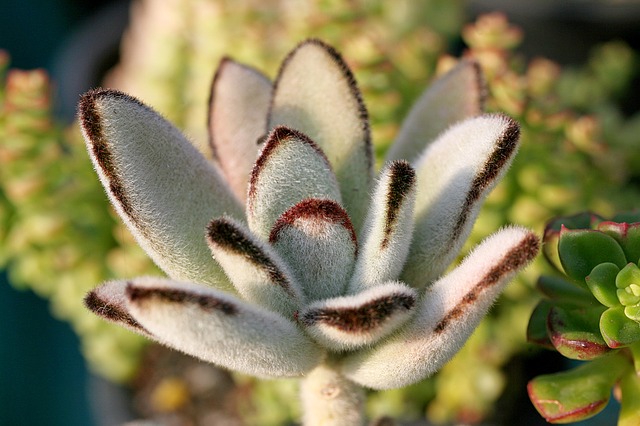
Temperature and Humidity
Maintaining appropriate temperature and humidity levels is crucial for Panda plants’ well-being. These plants prefer warm temperatures around 70°F and are sensitive to cold weather below 50°F. To ensure optimal growth, keep them in a warm, draft-free room, away from sudden temperature fluctuations. Additionally, Panda plants thrive in dry air over high humidity levels due to the delicate hairs on their leaves.
Fertilizing
Panda plants, being hardy in most home humidity conditions, thrive well without relying heavily on fertilizers due to their natural adaptation to nutrient-poor soils they are accustomed to in their native environments. However, providing them with occasional fertilization can benefit their growth significantly. To maintain their well-being, consider using low-concentration fertilizers during spring and summer at half-strength. Alternatively, an annual application of a balanced or succulent-specific fertilizer can suffice.
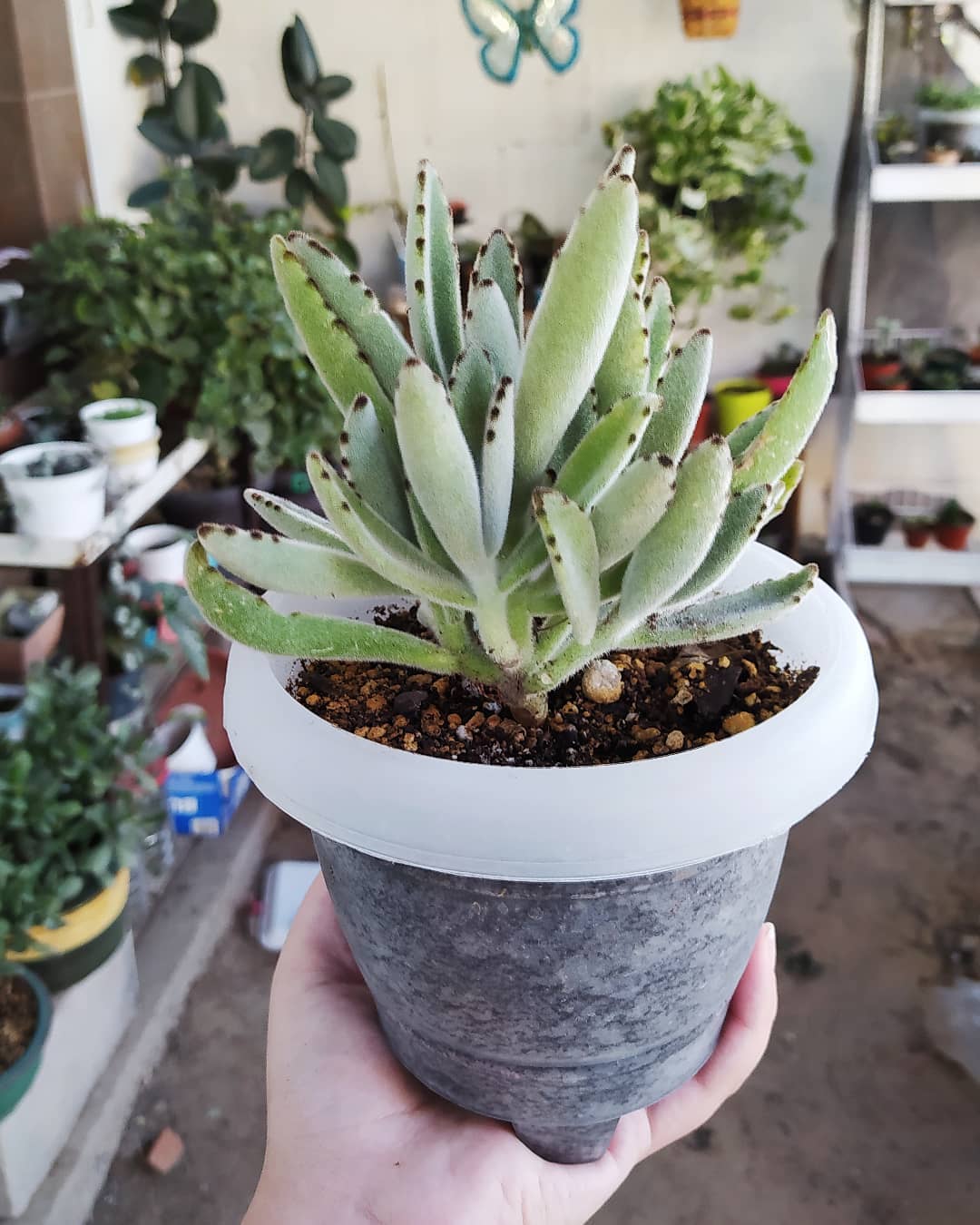
Propagation
If you are looking to expand your collection of these delightful plants, propagating panda plants can be a rewarding and straightforward process. These fuzzy plants can be easily propagated through stem cuttings and leaf cuttings. Although they take more time to develop roots compared to other plants, the results are worth the wait.
Propagating From Stem Cuttings
For a faster propagation process, utilizing stem cuttings from a mature panda plant can be more efficient, especially if compact leaf growth is desired. To begin, identify a healthy stem with robust leaves, ensuring that it is disease-free. Trim the stem cleanly just below a set of leaves, and remove the leaves from the bottom half of the cutting. Allow the cutting to dry and heal for a few days before planting it in a succulent potting mix. Water sparingly and patiently wait for the roots to develop, leading to new growth.
Propagating From Single Leaves
When propagating from single leaves, choose healthy leaves with a small part of the stem using a knife to increase success rates. Lay the leaves on top of a tray filled with succulent mix, waiting patiently for them to root. This method may take longer than stem cuttings but allows for multiple propagations simultaneously.
By following the simple steps for fertilizing and propagating panda plants, you can enjoy the process of caring for these charming succulents and watching them thrive in your home.To promote healthy growth and prevent rot, it’s essential to wait a few days before watering your Panda Plant, allowing the ends to heal. Overwatering can lead to sensitive leaves rotting quickly. Mist the soil gently instead of drenching it, ensuring the plant receives adequate but not excessive moisture. Continue misting for a few weeks until new growth emerges at the base of the leaves. Once the roots are established, transfer the plant into individual containers for ongoing growth.
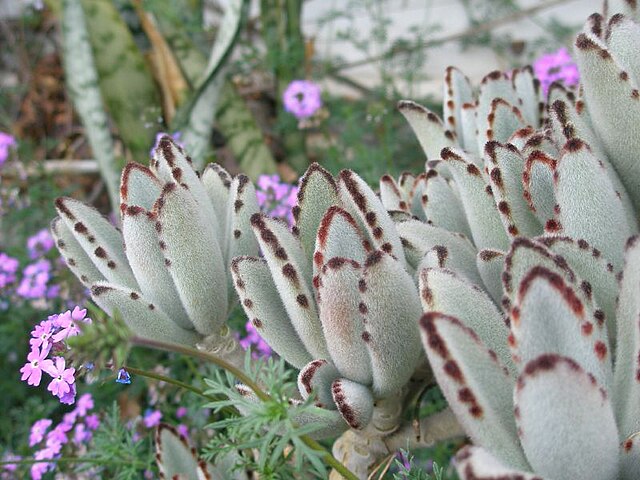
Repotting
When it comes to repotting your Kalanchoe tomentosa, consider moving it to a larger container every few years to accommodate its growth. Although these plants are compact, they can outgrow small containers over time. When repotting is necessary, follow these steps:
– Carefully remove the plant from its current container, loosening the roots if necessary.
– Gently shake off some of the old soil from the roots.
– Select a new container that is slightly larger and fill the bottom with a succulent soil mix.
– Place the plant in the new container and fill in the remaining space with soil.
– Allow a day or two for the roots to settle before watering the plant for the first time.
After repotting, continue caring for your Panda Plant as usual.
—
Repotting Kalanchoe tomentosa into larger containers every few years is essential for accommodating its growth. When the plant outgrows its current pot, follow these straightforward steps to ensure a successful transfer:
1. Carefully extract the plant from its existing container, ensuring to release any root entanglement.
2. Gently remove excess old soil from the roots.
3. Replant the Panda Plant into a new container that is one size larger, using a suitable succulent soil mix.
4. Allow the plant a day or two to adjust before initiating the first watering session.
Following these steps will ensure a smooth repotting process for your beloved Kalanchoe tomentosa.When a panda plant begins to decay, salvaging it becomes a challenging task.
To sustain growth, consider trimming healthy sections at the top half of the plant for propagation. Transferring it to fresh soil and removing affected areas are also viable solutions.
White Patches
If you spot fluffy white patches resembling cotton on the leaves, it could be a sign of a mealybug infestation. Combat this issue by swabbing alcohol on the bugs to eradicate them completely.
As Kalanchoe tomentosa is prone to rot, it’s advisable to propagate it in soil rather than water.
Although panda plants can bloom in their natural habitat, indoor flowering is infrequent. Offer them ample light and nutrients to stimulate blooming.
Kalanchoe tomentosa is toxic to pets, so ensure they are out of reach of any curious animals in the household.
If your panda plant appears droopy, reassess your watering routine as insufficient or excessive watering may be the cause.
In conclusion, armed with the knowledge on caring for Panda Plants, you are ready to introduce these unique plants into your home. These Kalanchoe variants promise to be delightful, low-maintenance houseplants that will grace your living space with their lush foliage for years to come!

